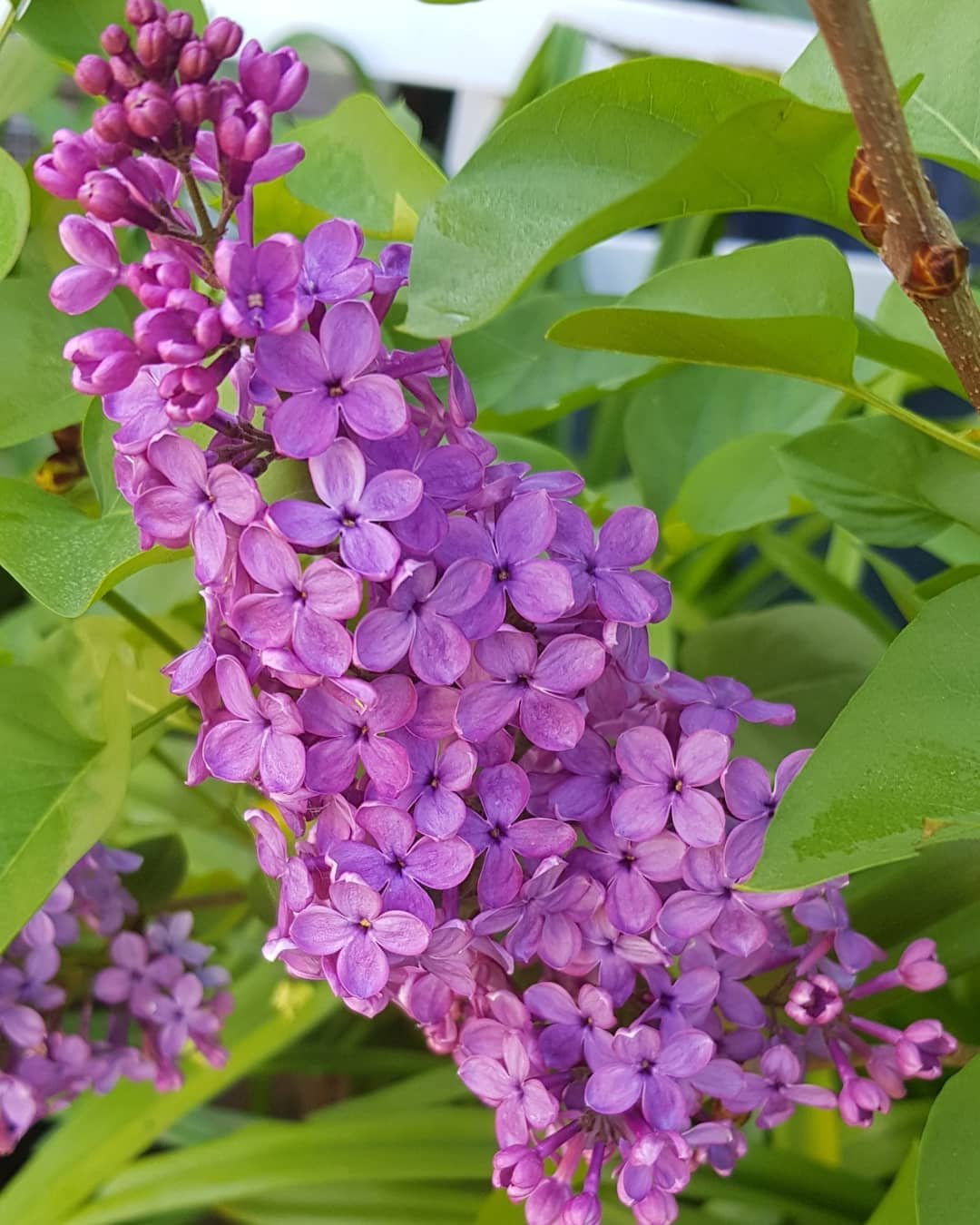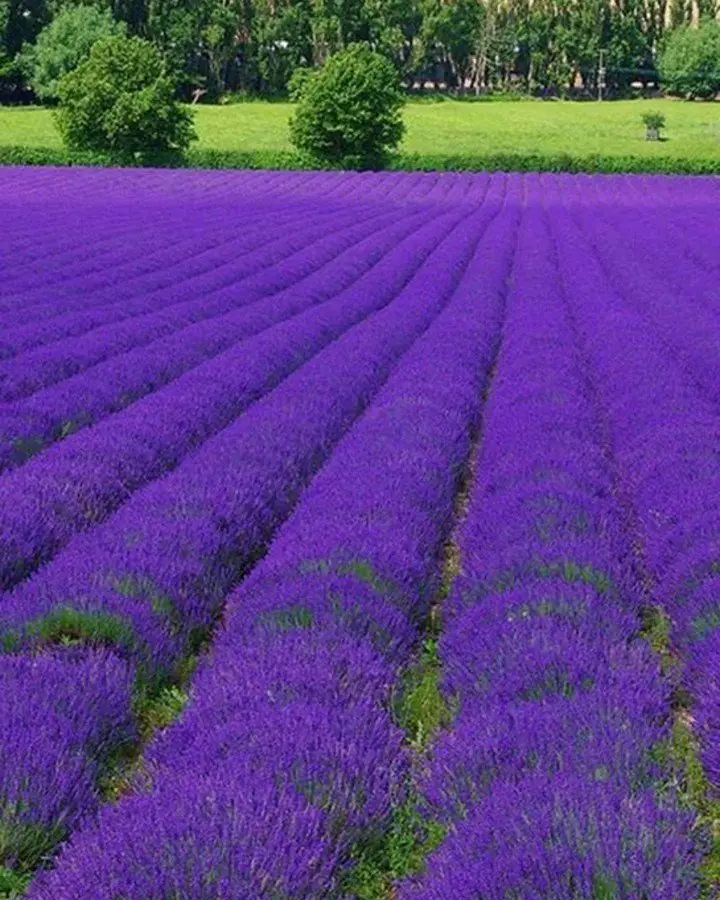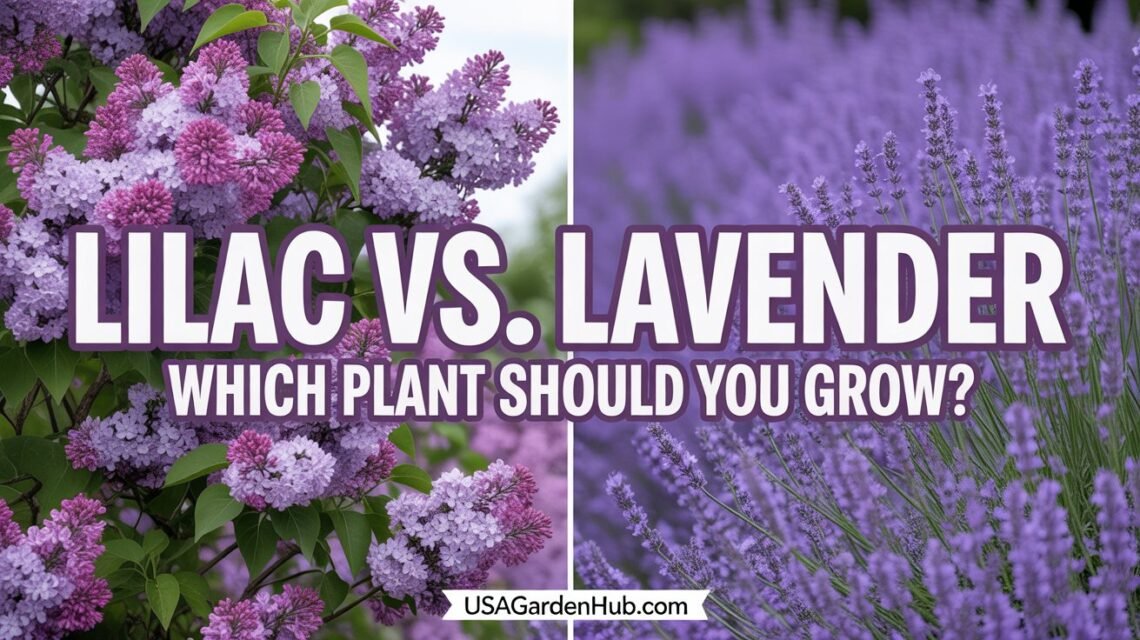Explore the difference between lilac and lavender plants and colors. Learn their traits, uses, and how to use them in your garden or home projects.

Hey there, plant lovers! I’m Ashley Scott, a gardening enthusiast with 10 years of experience growing herbs and flowering shrubs in my USA backyard. If you’re torn between planting lilac or lavender, you’re not alone—both are stunning, fragrant additions to any garden, but they’re quite different in looks, care, and uses. Lilacs are woody shrubs with bold, heart-shaped leaves and vibrant spring blooms, while lavender is a low-growing, evergreen herb with silvery foliage and long-lasting summer flowers. Both attract pollinators and thrive in USDA Zones 3 to 9, making them great for USA gardens. Below, I’ll compare lilac vs. lavender on key factors like appearance, growing needs, uses, and more, with care tips, my personal stories, and ties to projects like DIY compost bins and pollinator-friendly plants at USA Garden Hub. Let’s find out which plant suits your garden best!
Lilac vs. Lavender: Key Differences at a Glance
Here’s a quick comparison to set the stage, followed by a detailed breakdown.
| Feature | Lilac | Lavender |
|---|---|---|
| Botanical Name | Syringa vulgaris | Lavandula angustifolia |
| Plant Type | Deciduous shrub | Evergreen herb or subshrub |
| Height/Spread | 8-15 feet tall, 6-12 feet wide | 1-2 feet tall, 1-3 feet wide |
| Bloom Time | Spring (April-May) | Summer (June-August) |
| Flower Color | Purple, pink, white, blue | Purple, blue, white, pink |
| Foliage | Green, heart-shaped, deciduous | Silvery-green, needle-like, evergreen |
| Fragrance | Sweet, floral, strong | Herbal, calming, slightly camphorous |
| Uses | Ornamental, privacy screens, cut flowers | Culinary, aromatherapy, crafts, borders |
| USDA Zones | 3-7 (some to 8) | 5-9 |
| Sun Needs | Full sun (6+ hours) | Full sun (6+ hours) |
| Soil | Well-drained, neutral to alkaline (pH 6.5-7.5) | Well-drained, sandy, neutral to alkaline (pH 6.5-7.5) |
| Water Needs | Moderate, drought-tolerant once established | Low, drought-tolerant |
| Maintenance | Moderate (pruning after bloom) | Low (light pruning, minimal watering) |
Detailed Comparison: Lilac vs. Lavender
1. Appearance
- Lilac: Lilacs are tall, woody shrubs with large, heart-shaped leaves that turn yellow in fall before dropping. Their showy, cone-shaped flower clusters (panicles) bloom in spring, in vibrant shades of purple, pink, white, or blue, creating a dramatic focal point. A single lilac bush can dominate a garden corner, like my spooky plants for bold texture.

- Lavender: Lavender is a compact, evergreen herb with narrow, silvery-green, needle-like leaves that stay year-round. Its small, spiked flower heads bloom atop slender stems in summer, in purple, blue, white, or pink, offering a delicate, airy look. It’s perfect for low borders or rock gardens, complementing my Dalmatian Bellflower.

- My Story: My lilac bush towers over my backyard, stealing the show in spring, but my lavender border keeps the garden fragrant all summer. Lilac feels grand, lavender subtle.
2. Growing Conditions
- Light: Both need full sun (6+ hours daily). Lilacs may tolerate light shade but bloom less; lavender gets leggy without enough sun.
- Soil: Both prefer well-drained, neutral to alkaline soil (pH 6.5 to 7.5). Lilacs handle slightly richer soil, while lavender thrives in lean, sandy soil. I add compost from my DIY compost bin for both.
- Water: Lilacs need moderate water (1 inch weekly) while establishing, then tolerate drought. Lavender needs minimal water, perfect for drought-tolerant gardens. Overwatering lavender caused root rot in my first try!
- Temperature: Lilacs are cold-hardy (Zones 3 to 7, some to 8), needing winter chill for blooms. Lavender prefers warmer climates (Zones 5 to 9), tolerating heat better. Both handle 50 to 80°F well.
- My Tip: Plant lilacs in cooler zones for best blooms; lavender shines in hot, dry summers.
3. Care and Maintenance
- Lilac: Moderate maintenance. Prune after flowering to shape and remove spent blooms. Apply fertilizer (10-10-10) in early spring. Watch for powdery mildew in humid areas, treat with neem oil if needed.
- Lavender: Low maintenance. Prune lightly after blooming to prevent woodiness, avoid cutting into old wood. Fertilize sparingly or use compost. Rarely faces pests, but avoid overwatering.
- My Story: My lilac needed annual pruning to stay tidy, but my lavender just gets a quick trim and thrives with neglect, perfect for busy gardeners.
4. Uses in the Garden and Beyond
- Lilac: Ideal for ornamental displays, privacy screens, or hedges. Flowers are cut for bouquets, and their sweet scent fills the air. Pair with peonies for a spring show. Not edible, so keep away from culinary use.
- Lavender: Versatile for culinary uses (e.g., teas, desserts), aromatherapy, and crafts (sachets, oils). Great for borders, cottage gardens, or containers. Pairs with oregano for pest resistance.
- My Tip: I dry lavender for sachets and use lilac blooms in vases, both elevate my garden’s charm.
5. Pests and Problems
- Lilac: Susceptible to powdery mildew, aphids, and scale. Improve air circulation and use soapy water for pests. My lilac had mildew in a humid summer, fixed with better spacing.
- Lavender: Rarely bothered, but watch for root rot from overwatering or poor drainage. Spider mites can appear in hot, dry conditions, treat with neem oil.
- Fun Fact: Lavender’s scent naturally deters pests, making it a great companion, like in my spooky plants border.
6. Propagation
- Lilac: Propagate via softwood cuttings in summer or by dividing suckers in spring. Seeds are possible but slow (2 to 3 years to bloom).
- Lavender: Propagate with cuttings in summer or layering. Seeds are tricky, needing stratification. I rooted lavender cuttings easily, but my lilac suckers took patience.
- My Tip: Pair lavender with succulent propagation for a low-effort project.
Which Should You Choose?
- Choose Lilac If: You want a bold, tall shrub for privacy, spring drama, or a focal point in Zones 3 to 7. Great for larger yards and those who love cut flowers.
- Choose Lavender If: You prefer a compact, low-maintenance herb for culinary uses, crafts, or small spaces in Zones 5 to 9. Ideal for dry, sunny climates or urban gardens.
- My Story: My lilac anchors my backyard hedge, but lavender lines my patio for daily fragrance and easy picking. I love both, but lavender’s versatility wins for my small herb garden.
Care Tips for Success
- Planting: Space lilacs 10 to 15 feet apart, lavender 1 to 2 feet. Plant in spring or fall in well-drained soil.
- Soil Prep: Add compost from my DIY compost bin for nutrients, especially for lilacs.
- Watering: Water lilacs weekly until established, lavender sparingly. Both hate wet feet.
- Pruning: Trim lilacs post-bloom, lavender after flowering to maintain shape.
- Pollinators: Both attract bees and butterflies, boosting crops like carrots or cucumbers.
Wrapping Up
Lilac and lavender both bring fragrance and beauty to USA gardens, but lilacs offer bold spring drama, while lavender provides summer-long versatility. My lilac bush is a spring showstopper, and my lavender keeps the garden humming year-round. Whether you’ve got a sprawling yard or a city balcony, one of these will fit perfectly. Which will you plant? Share your garden plans in the comments on USA Garden Hub!





One comment on “Lilac vs. Lavender Plant: Which to Grow?”